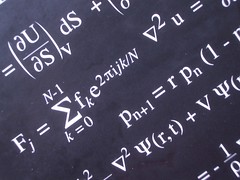 |
My paper “Odd Jacobi manifolds: general theory and applications to generalised Lie algebroids” has been accepted for publication in Extracta Mathematicae. The paper is an amalgimation of three preprints: |
arXiv:1111.4044v3, arXiv:1103.1803v1 and arXiv:1101.1844v3.
Abstract
In this paper we define a Grassmann odd analogue of Jacobi structure on a supermanifold. The basic properties are explored. The construction of odd Jacobi manifolds is then used to reexamine the notion of a Jacobi algebroid. It is shown that Jacobi algebroids can be understood in terms of a kind of curved Q-manifold, which we will refer to as a quasi Q-manifold.
I will post more details in due course.
What does this tell us about the symmetries of the Batalin-Vilkovisky antifield formalism of gauge theories?
BRST invariance sources the Equivalence Principle in perturbational string theory. If the EP can be (one presumes selectively rather than generally ) empirically falsified, BRST invariance is incomplete. How much fun is that? “8^>)
This is a good question. First the structures I have looked at are “classical” in the sense that they resemble the classical BV formalism, we have odd Poisson-like brackets etc. There are also issues of gradings here to take care of if we want concrete applications.
The thing is that we do not really see even Jacobi structures in physics. Any such structure can always be “Poissonised” and we are back to more standard structures.
So, I expect that one could produce a mechanical model that requires an odd Jacobi structure in a generalised BV formalism (exactly what this is may not be absolutely clear), but by a natural extension of the degrees of freedom we could be back to the classical BV formalism. Though, I have not actually got an example to hand.
In my mind, right now the work is really a work of pure geometry. I am happy with that, though some real connection with physics would be nice.
Also, I have a feeling that odd contact structure are probably more interesting from the BV point of view. But this is speculative right now.
A model can be mathematically crude (semi-empirical) and physically awesome (riblet effect) . Deep maths’ beauty is surprises (topological insulators, winglets, stealth radar frustration). Exciting excursions begin with “…that’s funny…”
Always look for a punchline. The Viking who discovered tacking was burned as a witch, then everybody did it (tacking). Pure research is the “The Aristocrats.”
Grats ajb! (this is still something for which you get somewhat excited about no?)
Thanks. Getting work published is not routine for me, yet!